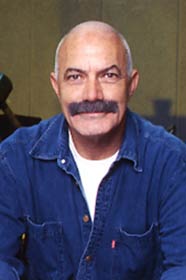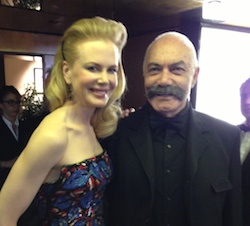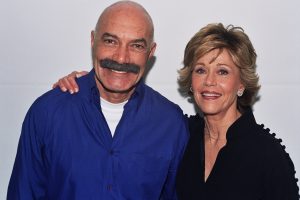




Red Eye is a B-thriller wrapped up in the glossy package of an A-movie: Wes Craven’s taut direction, sleek production values, and expert craftsmanship compensate up to a point the fact that the movie is basically plotless.
As written by Carl Ellsworth, from a story by him and Dan Foos, “Red Eye” is a gimmicky yarn set almost entirely within the claustrophobic space of an airplane 30,000 feet above. If the film’s running time, only 86 minutes, feels long, it’s because after the first reel, there’s not much story progression or character development.
The movie is divided into three parts. The first segment is set in Dallas airport terminal; the second, and best aboard an airplane; and the third and worst at the Miami airport and then the protagonist’s father’s house.
If today’s sophisticated technology were available during the studio era, “Red Eye” is the kind of movie that would have been allotted a small budget and assigned to a B director. At heart, “Red Eye” is an old-fashioned movie, benefiting from a cool, ultra-modern approach.
In some respects, it’s the opposite movie than the other femme-dominated thriller that opened last week, the Kate Hudson vehicle, “Skeleton Key,” which is not necessarily better but relies on stronger characterization. A two-handler, “Red Eye” has no real characters to speak of.
Even so, the first reel, in which the premise and the characters are established, is extremely engaging and fun to watch. For half of its duration, the movie pulls every nail-biting trick imaginable. “Red Eye” will touch a chord with viewers, since it depicts in detail chaotic airport terminals, where flights are delayed and passengers hysterical and edgy, bumpy teak-offs–what has become almost routine experience.
When the story begins, Lisa Reisert (Rachel McAdams), a Miami luxury hotel manager, rushes to make a Dallas-to-Miami red-eye flight while talking her flustered assistant manager, Cynthia (Jayma Mays) through a minor crisis on her cell phone. She comes across as a professional, focused woman in complete control. (It’s the script’s job to shake her up).
As bad weather and flight delays strand thousands of passengers at the airport. On line, Lisa meets a seemingly friendly and charming fellow traveler, Jackson (Cillian Murphy), who invites her for drinks. After socializing for a while, then separate only to meet minutes later, when it turns out they “just happen” to be sitting next to each other on the plane.
When we first meet Lisa, she is focused on one aspect of her life, her job. The nature of her work, which calls for handling all kinds of problems, has made her resourceful. But in her personal life, she’s a little closed off and suspicious of intimacy–for a reason that’s revealed later in the story. She deals with the death of her grandmother, who was her mentor, and there are problems in her past she’s still trying to come to grips with. Having cut herself off from the world, she’s cast her personal and familial relationships aside; her work has become her life.
In a matter of brief time, Jackson reveals that he’ a cog in an assassination plot aiming to kill the deputy secretary of homeland security, about to check with his family into Lisa’s hotel the next morning. Lisa is instructed to do exactly as told, or else her father (Brian Cox) will get killed at his Miami home.
Lisa, who appeared to be in control, reveals a secret that makes her especially vulnerable. She tries to hide it, but Jackson is an astute judge of character, a shrewd man who executes all his jobs without any moral repercussions. Lisa is caught in a dire situation. On the one hand, her life and her father’s life are at stake, and on the other, if she helps Jackson carry out his plot, she will become Jackson’s accomplice.
Lisa tries every trick in the book to convey her predicament to her fellow passengers and flights attendants, but to no avail, Jackson is on top of his game. The tense interaction between the duo, expertly shot in close-ups, is interrupted by series of phone calls that Lisa is forced to make to her father and to Cynthia.
The in-fight segment is extremely well-executed. Craven keeps Lisa and the viewers at the edge-of-their seats with quick pacing, perfectly timed music cues. The surrounding small dramas among the various passengers, such as an old lady who borrowed Lisa’s book, a young precocious girl who proves to be alert when needed, and so on, serve as useful digressions and also contribute to the film’s authentic feeling. Selodm has the expeirence of flying conveyed in such particular and graphic manner.
When the plane finally lands, hell break loose. Unfortunately, in the last segment, “Red Eye” deteriorates and almost self-destructs. Defying any credibility—even by standards of Hollywood thrillers—the tale resorts to by-the-book cat-and-mouse chase scenes. Very much a time-filler, since the story is already over, this part consists of two lengthy and improbable chases, one at the terminal, the other at Lisa’s father’s house.
Craven and Ellsworth forget all about plot, logic, and characters, and deliver an overlong sequence of Lisa fighting for her life. The yarn’s holes and contrivances are so big that they threaten to kill the movieish joy of the first two reels. Beware: “Red Eye” is not to be scrutinized with such questions as why didn’t the bad weather disrupt the villains’ plan, why Jackson’s and Lisas cell phone wouldn’t be fully charged when most needed How did Lisa leave the aircraft in the midst of alert
Mostly known for such classic horror films as “A Nightmare on Elm Street” and the “Scream” franchise, he now adopts a slightly more subtle approach to “Red Eye,” though, as always, still keeping the audiences on the edge of their seats. Much publicity is given to Craven’s departure from his specialized horror genre to the psychological thriller genres, a transition he easily and effortlessly makes.
The close-quartered interplay between Lisa and Jackson, the tight psychological mind play, was what drew Craven to the project. The particular setting presents both directing and acting challenges that the filmmakers meet. Craven is aware that, with two people in one space for a long time, he needs to heighten the drama, and he finds moments, looks, and gestures that add to the suspense and intensity.
With her charisma and beauty, McAdams (“The Notebook” “Mean Girls”) makes for a terrific heroine who’s both smart and vulnerable. However, she also possesses a past and a determination that Jackson fails to realize. From the moment she appears onscreen, she gets the viewers’ attention and sympathy, without which the film would not work.
Like Lisa, at first glance, Jackson is nice, cheerful and accommodating, but he can really turn quickly and reveal an intense and frightening, too. Murphy is pure malevolence, with his unusual face and physical presence suggesting nasty mysteriousness. The steely stare of Murphy’s deep blue eyes and his overly calm manner is truly creepy.
Cynthia, an unwitting participant in the plot, who mans the hotel in Lisa’s absence and ends up being the point person at the hotel, brings some comic relief. When the crisis erupts, and Cynthia is in the middle of it, she too comes of age and demonstrates valor and grit. In her feature debut, Mays is marvelous as the bright-eyed, nervous assistant who somehow pulls through. Playing a passive role, the gifted Brian Cox is given nothing to do, except for one critical act at the end, that can’t be revealed here.
Marco Beltrami’s nerve-tingling score is manipulative in the best sense of the term, hitting the right notes. Robert Yeoman’s camera is extremely mobile and fluid, considering the confined spaces. Patrick Lussier and Stuart Levy’s editing contributes to the tension-soaked ambiance.
The special effects are great. To shake up the plane and its passengers, the effects team has built a hydraulic deck measuring 105-feet long and 24-feet wide. A mock-up of the 767 was built on the deck, which in turn rested on a cushion of 50 specialized air bags, each capable of lifting 8,000 pounds. By inflating and deflating the airbags, the deck could be raised and lowered. To simulate turbulence, hydraulic rams connected to the sides of the platform.










